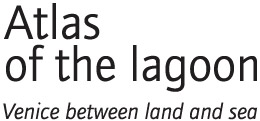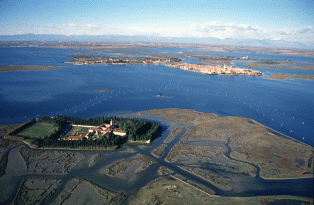
|
Why an atlas? Representation and reality
Man is both a “visual” and “visualising” animal.
Our species uses sight as its primary sense, a
characteristic which it shares with the rest of the
primates, and it is above all on the information
provided by our eyes that we base our cognitive
universe. Our species is able to visualise thoughts
and ideas, to create diagrams, graphs and
paintings. Dreaming is probably the most
powerful instrument nature has given us for
organising action and facing reality. To visualise
things is to represent them to ourselves before
others, to represent memories, to represent things
as they are but also as they could be.
Terms such as “imagination” and “idea” do not
come about by chance: “idea” comes from the
Greek eidos which means sight, intuition, image.
Imagination is perhaps the main gift required by
scientific researchers, as with craftsmen; people
who act, imagine and organise their ideas,
visualising them and crystallising them
graphically. To visualise situations means that they
can be analysed rapidly, and makes it possible to
compare scenarios (another term linked to visual
representation) and to plan. And planning means
deliberately changing the world – or keeping it
the way it is.
Graphic representations have an enormous capacity
to summarise, especially when they visualise
measurements, quantitative relations, numbers and
data. Graphic representation facilitates the
acquisition and comprehension of data, of the
numbers from which it was created. To estimate a
distance or recognise a landscape are fundamental
survival skills for all animals living above ground, be
they predator or prey, and for this reason a
representation which translates quantitative
relations into spatial relationships is more easily
understood and assimilated. Maps have long been
used for representing the territory, but only recently
have thematic maps been created for representing
what goes on in that territory.
We may be interested to know how air
temperatures vary in space rather than in time, or
to know what the temperature is in a given
moment in Piazza San Marco, on the Lido, in
Marghera, or at all the measuring stations. It is
sufficient to replace on one axis (generally the
abscissa) the spatial variable (the measuring
stations) with the temporal one (time) to generate
a new graph showing temperatures at a given
moment, or their average. The task is more
complicated if we seek to understand the distribution of temperature throughout the
Lagoon of Venice. The stations occupy a place in
physical space, they are not collocated along the
lines of a regular grid (and it is not always a good
idea for them to be so), and it is thus necessary to
take account of their actual distribution in the
territory. The values recorded may be represented
with appropriate symbols of suitable dimensions
(for example, coloured dots on the map near each
measuring station), or interpolation techniques
can be used to calculate temperatures in areas
between stations, where they were not measured.
Interpolation techniques therefore enable us to
deduce the value of a variable (in this case,
temperature) even in places where it was not
actually measured, and so to create a continuous
representation. Examples of this are shown in the
first two plates of the Atlas.
Mathematical reconstruction (interpolation) of the
values of variables in places where measurements
were not actually taken is a point on which to
reflect carefully. If the area were covered with
stations set very close to each other, the problem
would not exist; the mass of coloured dots would
be sufficient to describe thermal differences with
precision. But the measuring stations are
necessarily limited, and statistical models need to
be employed to estimate what happens in the
space between them. But how accurate is such an
estimate? Great care must be taken when reading
a map; the proper degree of importance can only
be attributed to a cartographical representation if
we have a good understanding of what it
represents, what its spatial variability is, how the
measuring campaign was conducted, and how the
interpolation was calculated. Many of these
aspects are described in detail in a technical note
at the end of this introductory chapter.
A representation is not the same as the object
itself, although cinema and television have shown
how this distinction is not always clear to
everybody. Images have a great capacity for
persuasion, they touch emotional chords
unaffected by logic: when we do not believe
somebody, we say: “Show me” or perhaps
“Demonstrate it”. It is precisely for this reason that
to propose graphic and especially cartographic
representations carries a great responsibility. An
atlas is a tool to facilitate thought. Those who
work on its creation always bear in mind these
simple but fundamental considerations and so, it
is hoped, will the readers of this Atlas. |
